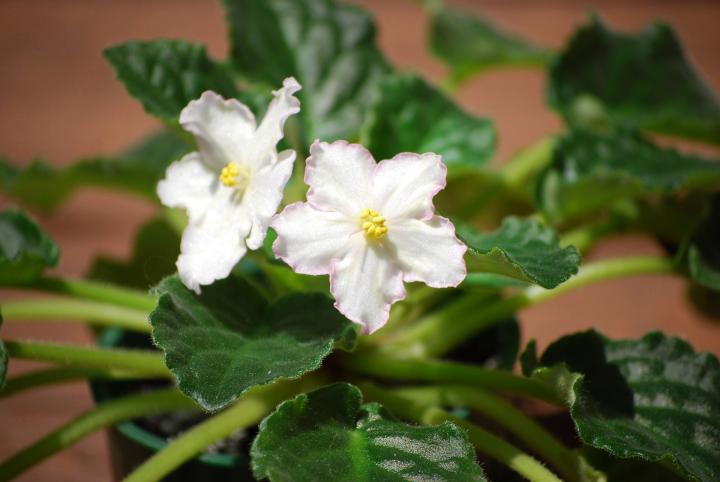
African Violets are delightful houseplants and will brighten up any room with their purple, pink, or white colors.
Sign up for our daily newsletter to get gardening tips and advice.
Growing African Violet Plants: Watering, Light, Repotting, and Pests
ADVERTISEMENT
My African Violet has split into two sections. One section is hanging over the edge of the pot. Should I uproot it and repot it in another pot?
Hi Velma,
It sounds like your African violet has produced an offset, which emerges from the base of the plant. If that is the case, you can certainly divide your plant and plant the offset in its own pot.
Spring or summer is the best time to divide an African violet because it is actively growing and gives the plant the best chance at recovering before it goes into the semi-dormant season.
Depending on when you last repotted your African violet, this would also be a good time to give your main plant a refresher. Just remember that African violets prefer to be slightly root bound so pick a container that matches the root size.
Here are a few references for dividing and repotting your African violet.
https://africanvioletsocietyofamerica.org/learn/violets-101/repotting-a-violet-with-a-neck/
Hope this helps!
Are African Violets harmful to cats if they try to eat them?
Are African violets harmful if dogs eat the plant.
African Violets are safe to have around cats! Learn more about Safe Houseplants for Cats.
I've grown African violets for years and have found that mine have done best when located in a sunny kitchen window over the sink. If the window is too sunny you can put a sheer curtain behind them in summer or a heavier one to keep out drafts in winter. Since they are tropical plants, they LOVE the moisture from the sink.
I had recently re potted my african violets due to the neck. I'm not sure what happened, but they started getting droopy and limp and just pittiful looking.
I re potted them again, but the same thing is happening again. I feel I overwatered the first time. Now, I'm watering less, but there is barely any life.
Is it possible to remove all leaves and just plant the stem in new soil and hope for good results?
Hi Rhonda,
Sorry to hear about your African violets. They are such beautiful plants.
Repotting your African violets is very specific and the African Violet Society of America has a great resource for how to repot your plants when dealing with necks, which is natural in their growing process.
Check out this link https://africanvioletsocietyofamerica.org/learn/violets-101/repotting-a-violet-with-a-neck/ for step-by-step instructions.
Is there anything I can use the beautiful flowers for? A craft or soap coloring perhaps? I've read that they are not edible but they are so cute!
Interesting question, Andrea.
We are not aware of ways to use the flowers of African violets. It would be interesting in soap; we don’t know it is too delicate, but try it!











